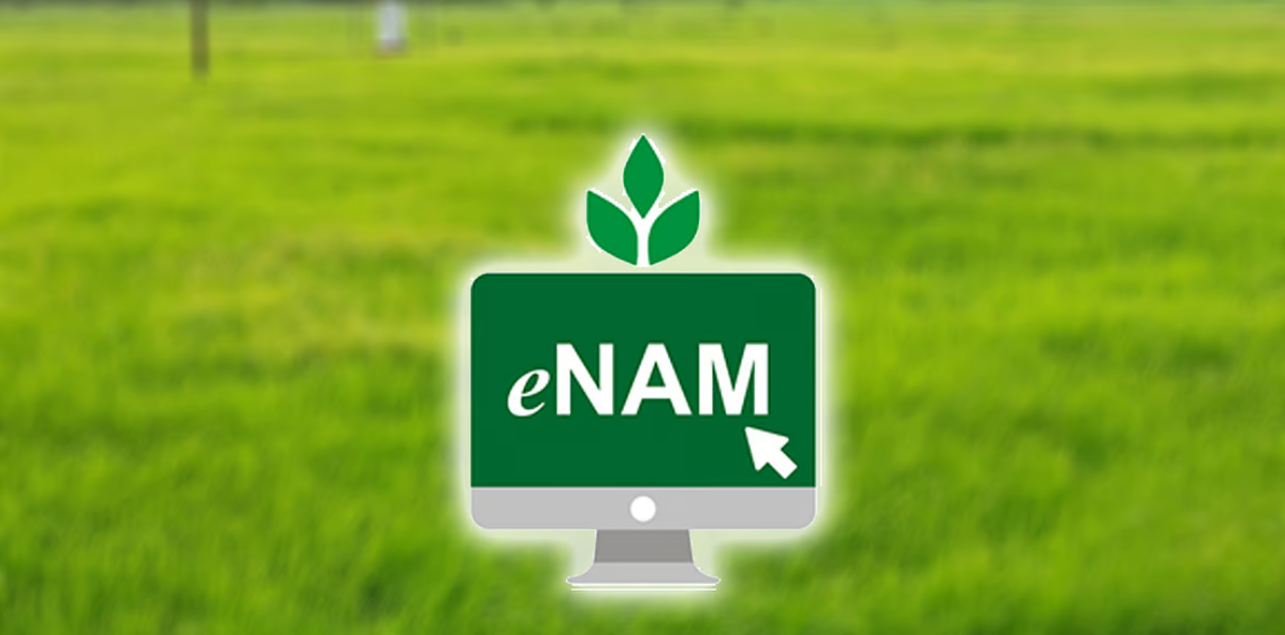The National Agriculture Market (e-NAM) is a revolutionary digital platform that has transformed agricultural marketing in India. Launched on 14 April 2016, e-NAM integrates multiple wholesale markets (mandis) across the country to create a unified online marketplace for agricultural commodities. This innovative initiative has significantly enhanced market transparency, ensured better price discovery and empowered farmers. In this blog, we will explore the benefits of e-NAM, its impact on the agricultural sector and how it is reshaping India’s farming economy.
What is e-NAM?
The Electronic National Agriculture Market (e-NAM) is a pan-India electronic trading portal that links the existing Agricultural Produce Market Committees (APMCs) to create a single nationwide market for agricultural produce. Managed by the Small Farmers’ Agribusiness Consortium (SFAC) under the Ministry of Agriculture and Farmers’ Welfare, this platform enables farmers, traders and buyers to seamlessly trade commodities online, breaking geographical barriers.
Key Features of e-NAM
- Unified Market Access: e-NAM eliminates physical boundaries, allowing farmers to sell their produce to buyers across the country.
- Transparent Pricing: Real-time price discovery ensures farmers get fair rates for their crops.
- Online Payment System: Secure digital payments ensure prompt transactions for both farmers and traders.
- Quality Grading System: Produce is evaluated based on standard quality parameters, ensuring buyers receive trusted commodities.
- Increased Competition: The presence of multiple buyers enhances competition, helping farmers secure better prices.
Benefits of e-NAM for Farmers
The benefits of e-NAM are extensive and directly impact farmers by improving their market reach and profitability:
- Better Price Realization: Farmers can compare prices from various markets and sell where they get the best deal.
- Reduced Dependency on Middlemen: The platform connects farmers directly with buyers, eliminating excessive commission charges.
- Access to a Wide Range of Commodities: Farmers can trade in various e-NAM commodities such as cereals, pulses, fruits, vegetables and spices.
- Time and Cost Efficiency: Digital transactions minimize the need for physical visits to mandis, saving time and resources.
e-NAM Commodities and Trading Scope
The National Agriculture Market (e-NAM) currently facilitates the trade of 231 commodities, including:
- Food Grains/Cereals: 35 varieties
- Oilseeds: 14 varieties
- Spices: 18 varieties
- Fruits: 46 varieties
- Vegetables: 61 varieties
- Miscellaneous: 57 varieties
The diversity of commodities traded through e-NAM empowers farmers to expand their market presence and secure better returns.
e-NAM Mandis Across India
- Total Integrated Mandis: 1,410
- Top 5 States on the e-NAM Platform:
- Rajasthan (166)
- Tamil Nadu (157)
- Gujarat (144)
- Madhya Pradesh (139)
- Maharashtra (133)
For farmers seeking logistical support, a dedicated e-NAM Call Centre is available at 1800-270-0224.
How e-NAM is Empowering Indian Farmers
- Increased Market Access: Farmers from remote regions can now connect with major markets across India.
- Enhanced Price Transparency: Real-time price tracking helps farmers make informed decisions about when and where to sell.
- Financial Security: The digital payment system ensures farmers receive timely payments, reducing financial risks.
- Improved Supply Chain Management: e-NAM streamlines the movement of goods, reducing post-harvest losses.
Government Support for e-NAM
To promote the adoption of e-NAM, the Indian government has implemented various initiatives:
- Financial Assistance: Grants of ₹30 lakh are provided to participating agriculture mandis to facilitate their integration with the e-NAM platform.
- Infrastructure Development: Support for building grading, sorting and quality-check facilities in mandis.
- Training and Awareness: The government regularly conducts awareness campaigns to educate farmers about e-NAM’s benefits.
- Competent Personnel Deployment: A dedicated officer is appointed for one year in each mandi to ensure smooth e-NAM operations.
What is APMC?
The Agricultural Produce Market Committee (APMC) is a system operating under the State Government to regulate notified agricultural produce and livestock markets. Established in 2003, the APMC aims to ensure fair trade practices and protect farmers from exploitation.
Key Constitutional Provisions for Agriculture
- Agriculture as a State Subject: Defined under Seventh Schedule, Article 246.
- Article 301: Ensures freedom of trade and commerce across India’s territories.
Important Exam Questions on e-NAM
Q1: e-NAM was launched in which year?
(a) 2014
(b) 2012
(c) 2016
(d) 2013
(e) 2011
Answer: (c) 2016
Q2: Which platform is an electronic trading system for farmers to sell their produce and obtain fair prices?
(a) e-NAM
(b) e-Choupal
(c) e-Trade
(d) APMC
(e) None of these
Answer: (a) e-NAM
Q3: Which ministry is responsible for implementing e-NAM?
(a) Ministry of Finance
(b) Ministry of Agriculture and Farmers’ Welfare
(c) Ministry of Rural Development
(d) Ministry of Commerce
Answer: (b) Ministry of Agriculture and Farmers’ Welfare
The Electronic National Agriculture Market (e-NAM) is revolutionizing Indian agriculture by empowering farmers, improving price transparency and enhancing trade efficiency. By embracing digital platforms like e-NAM, India’s agricultural sector is moving towards a more sustainable and profitable future.
Stay tuned to Agri Coaching Chandigarh for more insightful blogs on agricultural advancements, exam preparation tips and career guidance in the field of agriculture.






